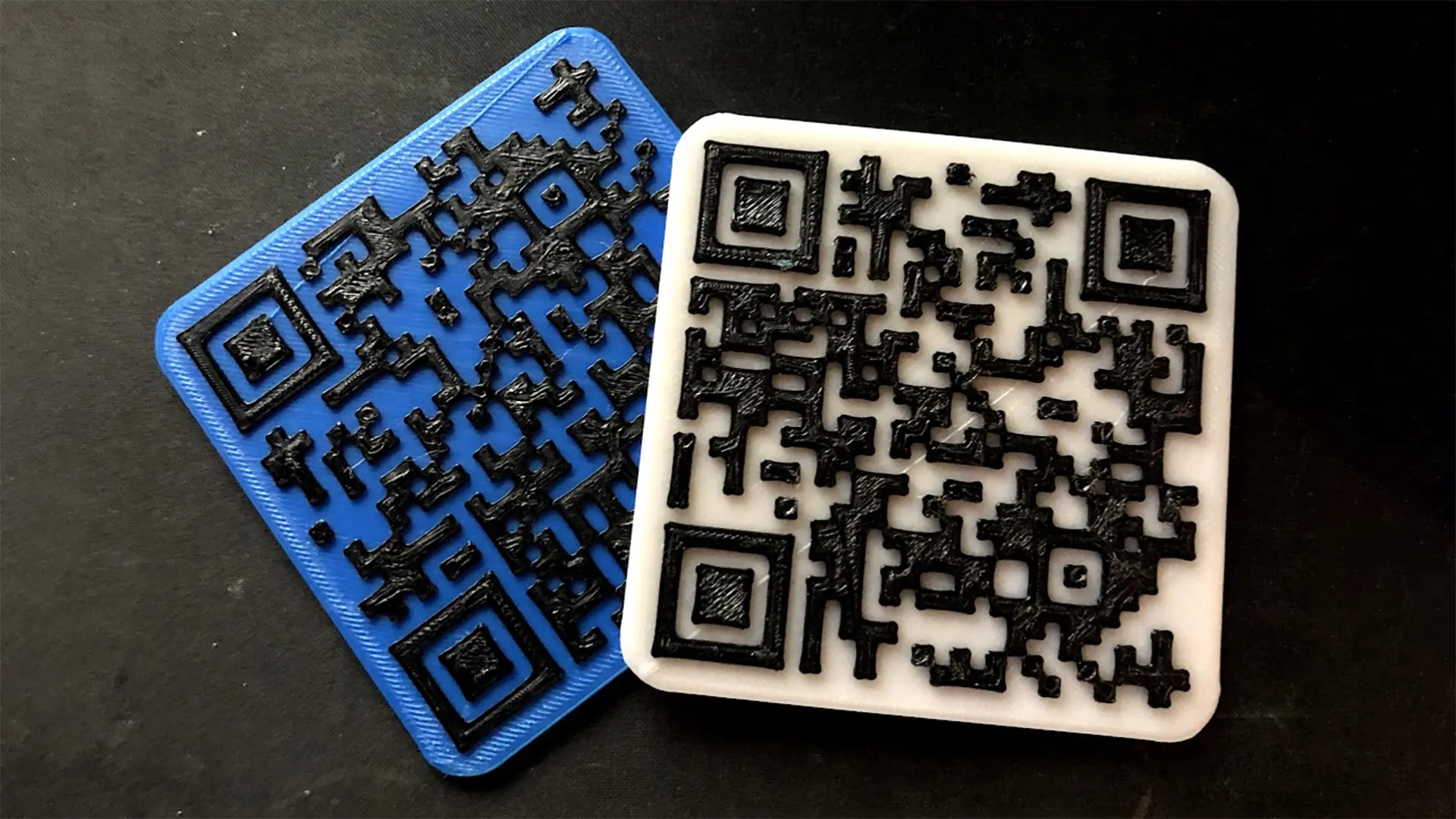A 3D printed edible QR code has been created by a team from the Singapore University of Technology and Design. The revolutionary extrusion method that their 3D food printer uses to effortlessly switch between different kinds of filaments allowed them to achieve this creative feat. ThreeD food printing has advanced significantly thanks to the efforts of Cheng Pau Lee, Nicole Min Yu Chian, Mervin Jian Yi Ng, and Michinao Hashimoto.
3D food printers are not a novel concept, but this particular development stands out due to its capability to use a broader variety of food-based filaments. Previous models, such as the Cocoa Press 3D Printer, have already made their mark with their ability to print using chocolate. However, the Singapore team’s printer is particularly noteworthy for its versatility in filament usage. This versatility, while advantageous, presents a challenge as different filament compositions require varying pressure levels, necessitating frequent nozzle changes.

To overcome this hurdle, the team designed a specialized nozzle capable of switching between filaments with different pressure requirements. This design innovation not only simplifies the process but also ensures a seamless transition between materials, leading to more precise and consistent printing. This advancement is significant as it eliminates the need for manual nozzle changes, which can be time-consuming and prone to errors.
The team demonstrated the capabilities of their 3D printer by creating various objects using multiple materials. One of the most intriguing examples is a working QR code that can be scanned and then consumed. This edible QR code showcases the potential of their technology for creating interactive and functional food items. The team’s findings and the detailed design process of the nozzle were published in a recent issue of Future Foods. The publication includes step-by-step explanations and images that document the development of this innovative system.
An individual on the team named Dr. Lee provided further details regarding the possible uses of their research. By adjusting the nutritional value of printed food, he pointed out, people may utilize technology to help them satisfy particular dietary needs. Other, more whimsical uses for the printer would be to make interactive designs and edible QR codes. Because of its versatility, 3D food printing technology can be used for a plethora of purposes, both personal and commercial.

The ability to print food items with specific nutritional content could revolutionize dietary management, particularly for individuals with dietary restrictions or those needing tailored nutrition plans. For instance, customized meals could be printed for patients in hospitals, ensuring they receive the exact nutrients they need. Similarly, athletes could benefit from personalized energy bars and supplements designed to meet their unique dietary needs.

Moreover, the fun and interactive aspect of edible QR codes and other designs could have various applications in the culinary and hospitality industries. Restaurants could use this technology to create unique dining experiences, such as presenting diners with a scannable menu embedded in a dessert. Educational institutions could also use it to make learning about nutrition and food science more engaging for students.
The development of this technology is a testament to the innovative spirit of the team at the Singapore University of Technology and Design. By addressing the challenges of using multiple food-based filaments in 3D printing, they have opened the door to a new era of culinary creativity and precision nutrition. The potential applications of their work are vast, ranging from practical dietary solutions to exciting new forms of edible art.
For those interested in learning more about the team’s work and their edible QR codes, the full research can be found on Science Direct. The publication provides a comprehensive overview of their findings and the potential future applications of their 3D food printing technology. This breakthrough not only highlights the possibilities within the realm of 3D printing but also underscores the importance of continued innovation and research in the field of food technology.
The team from the Singapore University of Technology and Design has made a remarkable achievement by 3D printing an edible QR code. This feat was achieved through a newly designed extrusion system that allows the 3D food printer to easily switch between different food-based filaments. The team consists of Cheng Pau Lee, Mervin Jian Yi Ng, Nicole Min Yu Chian, and Michinao Hashimoto, who have significantly advanced the field of 3D food printing.
While 3D food printers are not new, this development is unique due to its ability to use a variety of food-based filaments. Previous models like the Cocoa Press 3D Printer have made a name for themselves by printing with chocolate. However, the Singapore team’s printer stands out for its versatility in filament usage, which, despite being advantageous, presents a challenge. Different filament compositions require varying pressure levels, necessitating frequent nozzle changes.

To address this challenge, the team designed a specialized nozzle that can switch between filaments with different pressure requirements. This innovation simplifies the process and ensures a seamless transition between materials, leading to more precise and consistent printing. This advancement is significant as it eliminates the need for manual nozzle changes, which can be time-consuming and error-prone.
The group created a functional QR code that can be scanned and then consumed in order to showcase the possibilities of their 3D printer. Their technique has the potential to produce interactive and useful food things, as demonstrated by this edible QR code. A recent issue of Future Foods featured the team’s findings and a full design process for the nozzle, complete with step-by-step instructions and pictures showing the system’s evolution.
If you like the article please follow on THE UBJ.

